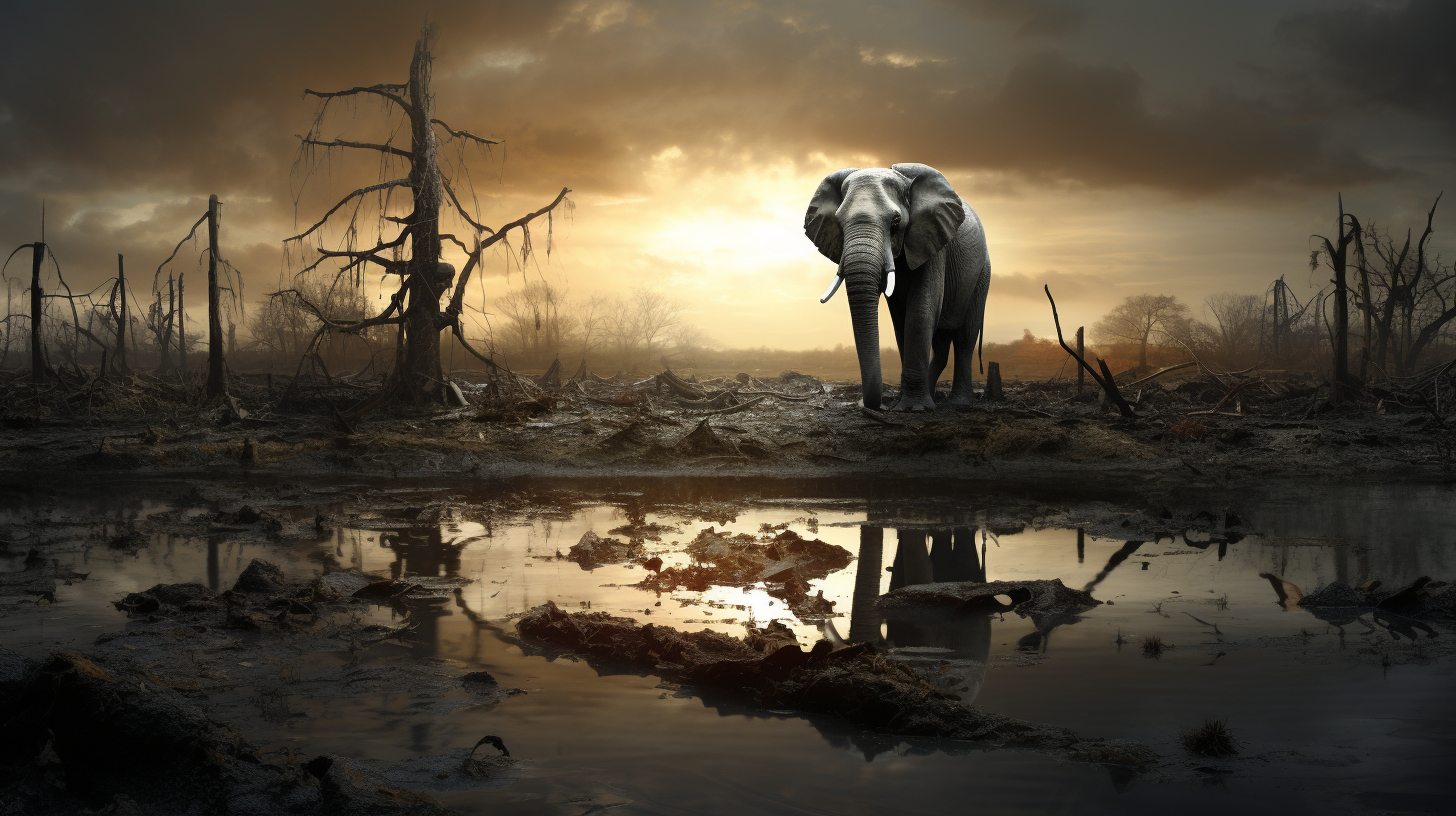In a world where the silhouette of the Rhino is but a shadow and the Tiger’s roar has fallen silent against the cacophony of industrial clamor, we ask: Is hope extinct? This is not another episodic entry of endangered species – this is the final ‘Chronicle of Vanishing Wildlife’, a eulogy for the once-vibrant tapestries of life that painted our planets ecosystems.
Gone are the days when Earth’s bountiful biodiversity could boast uncharted territories of life brimming in every corner. As the wilderness withers, the ambience in rainforests transforms from buzzing symphonies of exuberance to the distressing silence of desolation.
Why must we chronicle this loss? The rapid disappearance of species across the globe is not merely a poignant tale for naturalists; it is humanity’s own testament of failure. From poaching to habitat destruction due to rampant deforestation, and the cataclysmic changes brought forth by climate calamities such as relentless droughts and wildfires – the culprits of this apocalyptic saga are unveiled with humanity at the helm.
Take, for instance, the plight of the Monarch Butterfly. Once a majestic marvel fluttering in our meadows, they are now a rare sight. Their migration, an awe-inspiring phenomenon, has faltered under the yoke of agricultural expansions that decimate the milkweed they depend upon. Their dwindling numbers are a grim reminder of our own invasion of nature’s delicate balance.
And what of the coral reefs? These underwater rainforests, home to numerous species, now suffocate under the sea’s warming waves. As oceans acidify and bleaching events become annual rites, we observe the coral’s vivid colors drain into ghostly whites – a harbinger of marine ecosystems on the brink.
As we narrate these tales of loss, we draw connections with the vanishing peaks and desertified urban realms documented previously. What emerges is a pattern, an interconnected web binding these tragedies. Mountain ranges erode, taking with them the unique life they support; urban sprawls expand, displacing the indigenous fauna into the oblivion of extinction.
Some activists argue that this is not merely a time for mourning, but also a call to arms – a desperate, eleventh-hour push for conservation efforts. Yet, the stark reality painted by these chronicles reveals a bleaker vision. Where these efforts were seeds of hope, the pounding drought of environmental calamity has left them struggling to take root.
Can we not hear the dirge of the Amphibians, their calls disappearing from our wetlands? Do we not see the demise of the great Apes, their forest homes shrinking beneath the chainsaw’s bite? The echoes of a once wild Earth are fading, leaving behind the silence of graveyards where life once prospered. These are not warnings of what may come – they are epitaphs of what already is.
While we cannot reclaim the past’s lost grandeur, this chronicle does not serve to extinguish the smoldering wick of action. Rather, it is an urgent plea to acknowledge the dire straits we navigate – a plea for remembrance and reflection before the last embers of wildlife’s vibrancy are snuffed out by the relentless winds of progress and negligence.
In this bleak tableau of ecological ruin, hope may indeed seem a rarity, fragile as the wingbeat of the last bee. Yet, it must be asked, as long as there is life, however tenuous, can hope truly be declared extinct? Or is it nestled quietly among the resilience of those striving – against all odds – for a reverent coexistence with nature?
‘Is Hope Extinct?’ may be a question more profound and searching than the title of this chronicle implies. It may be the query that spurs the final stand, the enduring endeavor of humanity to rewrite these tales of damnation into legacies of restoration. For the sake of the Earth’s remaining guardians, the time to act is not upon us – it is already passing.
Is it not then our solemn duty, as chroniclers of these dark times, to ensure that every fleeting moment is seized in defiance of the impending silence?
